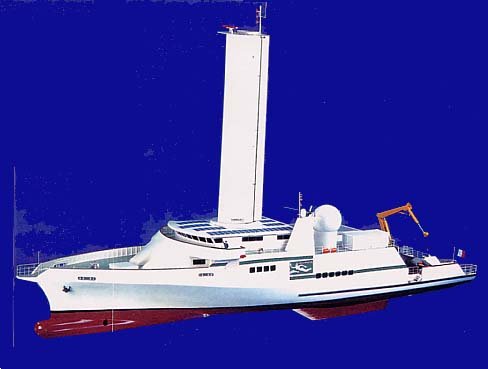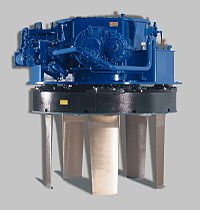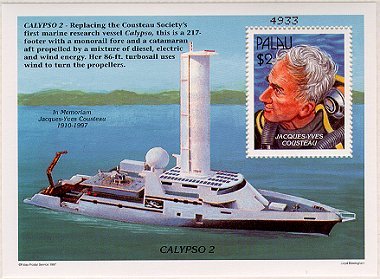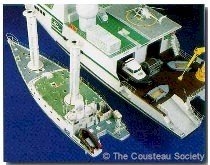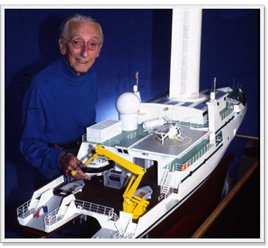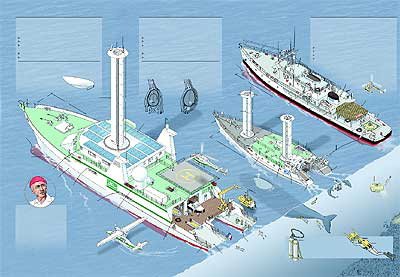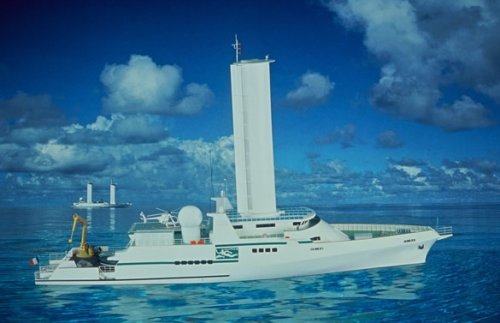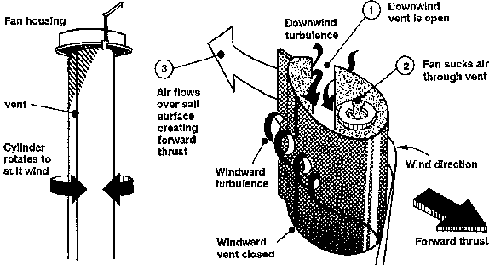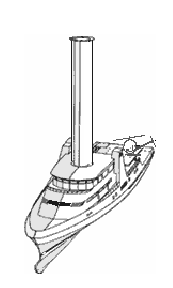R/V Calypso II was an oceanographic research and documentary expedition support vessel that was unveiled by Jacques Yves Cousteau shortly before his death. To date, the ship has not been constructed by the Cousteau Soceity/Equipe Cousteau.
The Calypso II was aluminum-hulled, monohull forward and catamaran aft, with a diesel engine driving two Voith Schneider Propellers (VSP), also known as a cycloidal drive, and an 85-foot-tall auxiliary sail that Cousteau helped develop known as a Turbosail (TM).
She would have been equipped with film and scientific laboratories, and numerous airborne and submarine exploration devices (an observation chamber in the stem, a state-of-the-art dive locker, a helicopter, a maneuverable submarine, hydroplane, etc.). This 66-meter vessel would be spacious enough for 36 passengers, including her 15 crew members. There would be space for film teams, scientists, and special expedition guests. In addition, she would be equipped with a film editing room, a photographic darkroom, a satellite communication system and many other features.
Dimensions
----------
Length: 66.00 m
Beam : 16.20 m
Draught : 3.50 m
Cruising Speed: 14 nds
http://www.youtube.com/watch?v=VFhIsyFA9ak
The Calypso II was aluminum-hulled, monohull forward and catamaran aft, with a diesel engine driving two Voith Schneider Propellers (VSP), also known as a cycloidal drive, and an 85-foot-tall auxiliary sail that Cousteau helped develop known as a Turbosail (TM).
She would have been equipped with film and scientific laboratories, and numerous airborne and submarine exploration devices (an observation chamber in the stem, a state-of-the-art dive locker, a helicopter, a maneuverable submarine, hydroplane, etc.). This 66-meter vessel would be spacious enough for 36 passengers, including her 15 crew members. There would be space for film teams, scientists, and special expedition guests. In addition, she would be equipped with a film editing room, a photographic darkroom, a satellite communication system and many other features.
Dimensions
----------
Length: 66.00 m
Beam : 16.20 m
Draught : 3.50 m
Cruising Speed: 14 nds
http://www.youtube.com/watch?v=VFhIsyFA9ak

